Please, please, please don't just have a go! Things may work out really expensive for you if you screw it up. I'm a nice guy and I often don't charge for the time that it actually may take to perform a rescue operation.
A few weeks ago, I received a module-board from a Roland JX-10. It had a couple of faults on it which the customer was unable to fix so after a couple of failed DIY repair attempts, he decided to send me... just the board!
I pretty quickly tracked down a duff 82C54P timer IC. I always try to replace ICs in vintage gear with the same devices and on this occasion, I didn't have any of these in stock. That meant I had to wait some time for an order to come in.
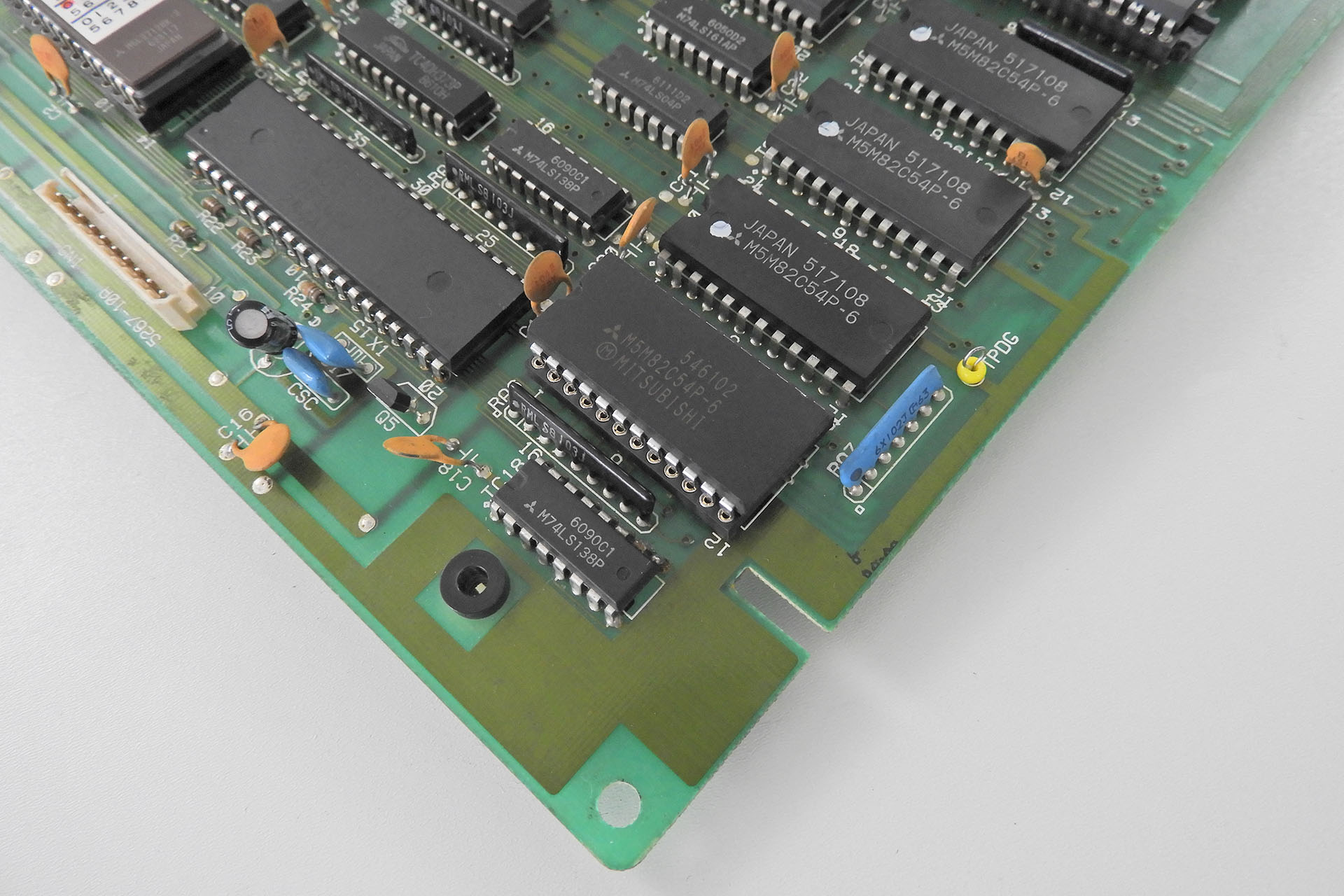
It was quite apparent that all of the 4051s had been replaced. 🙁 Note how the turned-pin IC sockets are extended and cover up the PCB component reference. Seriously?!?!?
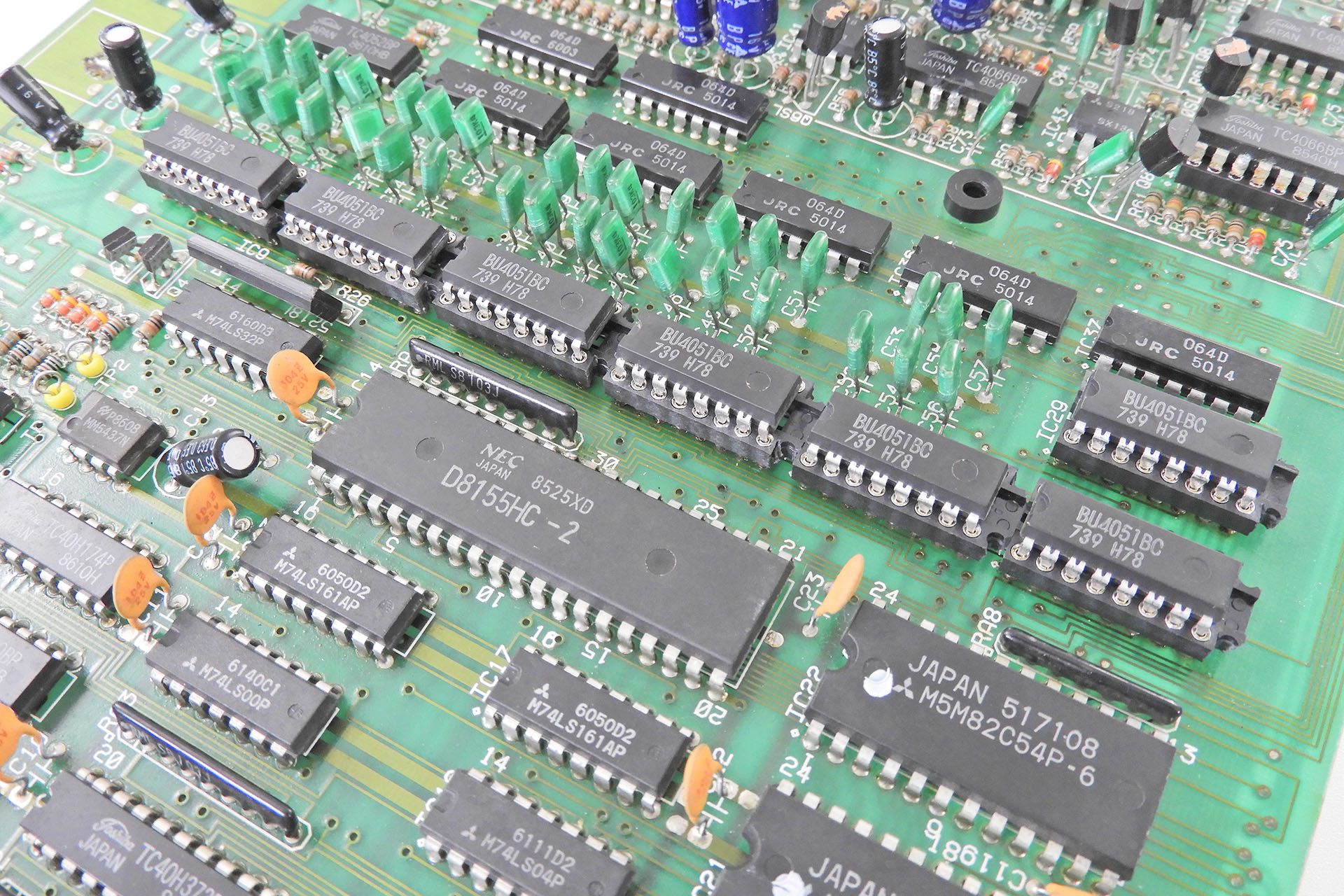
So knowing that things wouldn't be as simple as changing a duff 82C54P, I proceeded to check connections and discovered three that weren't... connected, I mean.
Incidentally, buzzing out one of these boards requires a lot of time, patience and coffee!
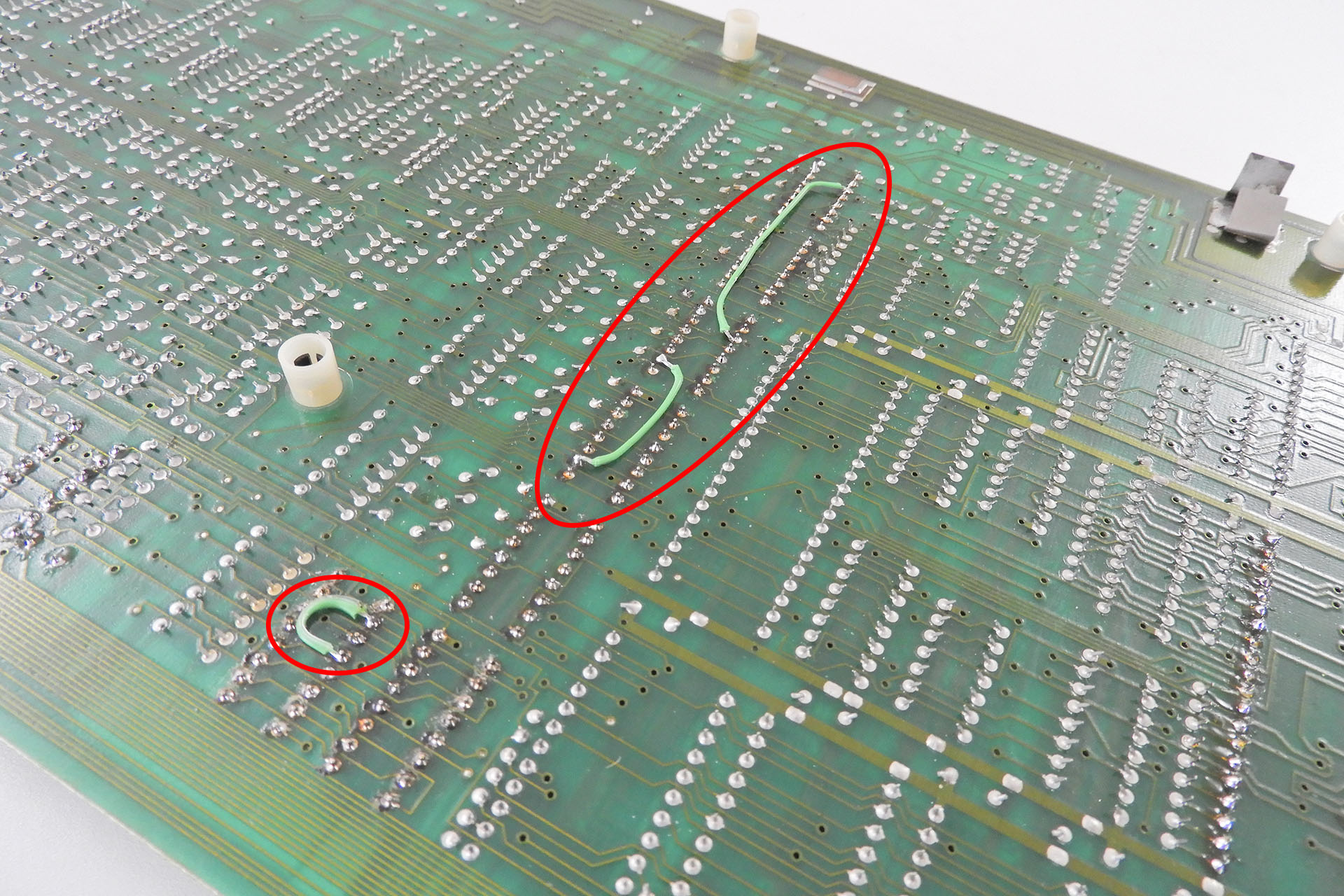
Final testing and at last, everything seems to be working. Of course I'll need to go through a whole bunch of routines to be sure. 🙁
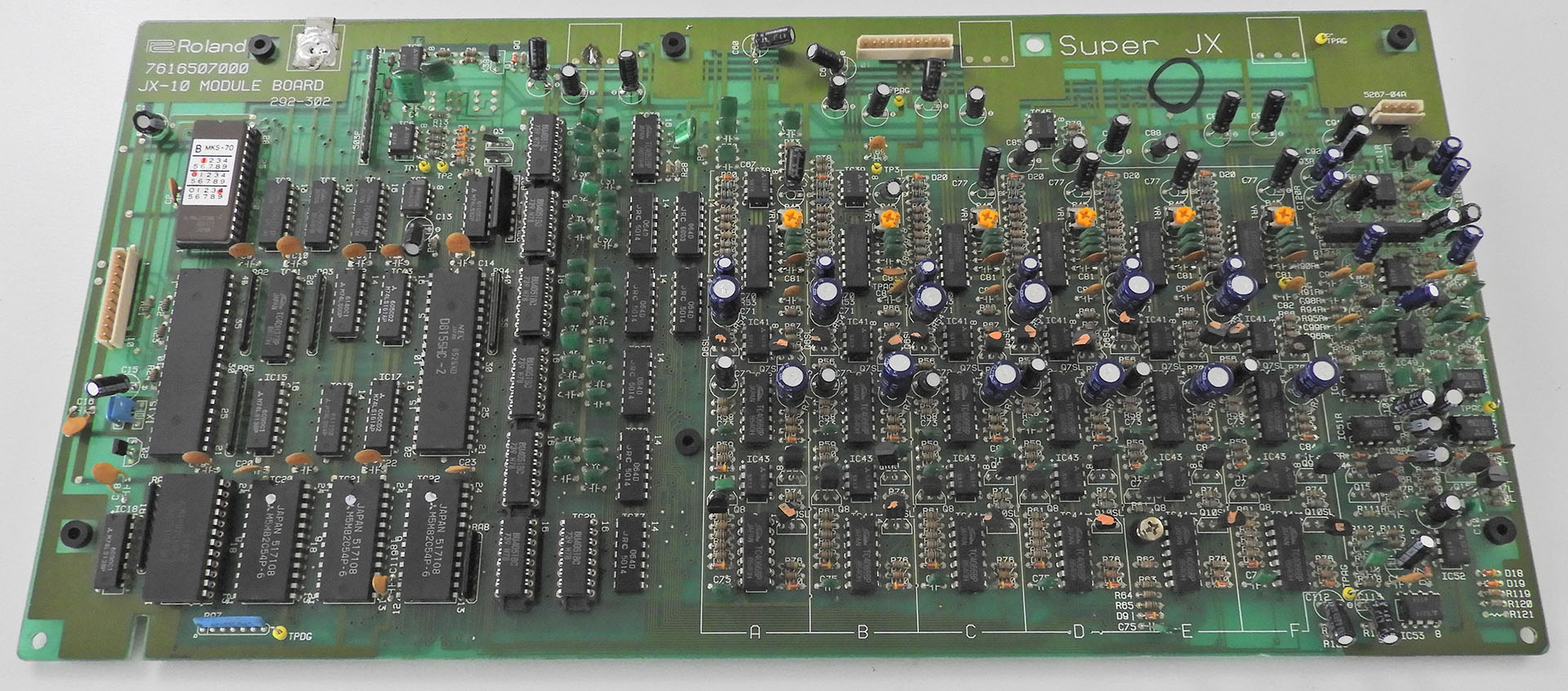
Eighties synthesisers are just beautiful but they're also incredibly complicated and being thirty-something years old, they're also a little fragile. Today there's a wealth of information out there on the www but you still need to know what you're doing. Service notes are often riddled with mistakes for example and following them as if they were written in stone, is a common mistake in itself. So unless you have the right equipment, knowledge and experience, please don't just have a go!
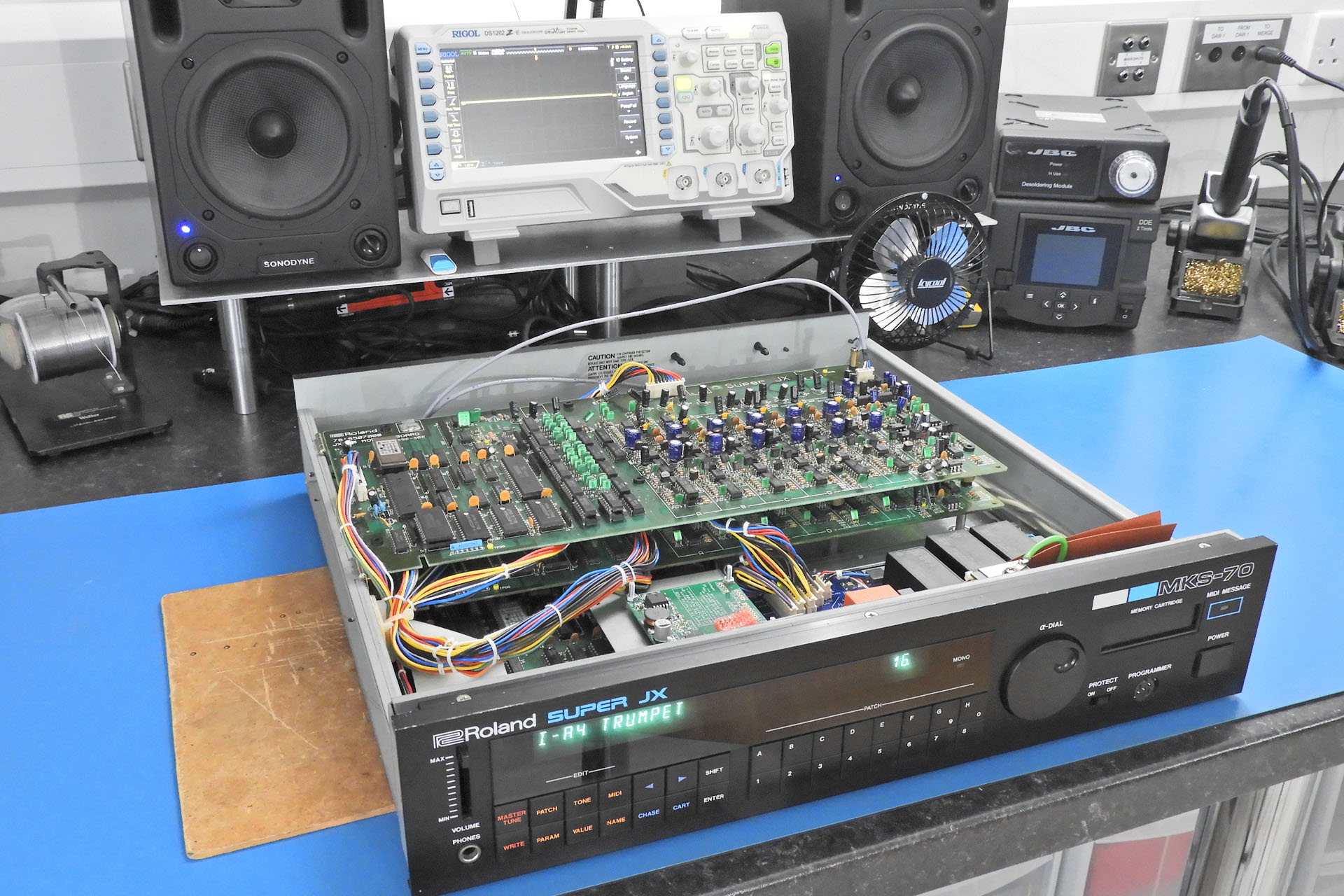
The expression “all the gear but no idea” might not be universally known but the sentiment probably is. Whilst there’s absolutely nothing wrong with having a confident character, doing your best at what you know and accepting the fact that you shouldn’t attempt the things that you don’t, may be considered a more valuable attribute. It’s called wisdom.
I periodically receive boards from people who for example, have watched a video on YouTube and decided that they can immediately do some in-depth work on a thirty-something year old synthesiser. Having the right equipment is only part of the story. Knowledge and experience take time and cannot be acquired over night let alone via a YouTube video.
If you want to remove devices like the counters on the Super-JX voice-boards for example, PLEASE consider following these steps:
- Using a pair of side cutters, snip the IC legs close to the body of the IC that you want to remove.
- Then, using a soldering iron and a pair of tweezers, simply pull out the legs from the solder pads.
- Once the pins are out, it’s much easier to remove the residual solder from the respective solder pins, with a good quality, electronic desoldering tool and you’re far less likely to damage your voice-boards.
I strongly recommend that you practice on some old, unwanted PCBs before you start working on your own valuable gear!

Yeah okay, you lose the components but that’s a small price to pay against ruining your Super-JX voice-boards.

I make no apologies if that all sounds a bit harsh. It's far more upsetting for me to receive damaged voice-boards, I assure you!

